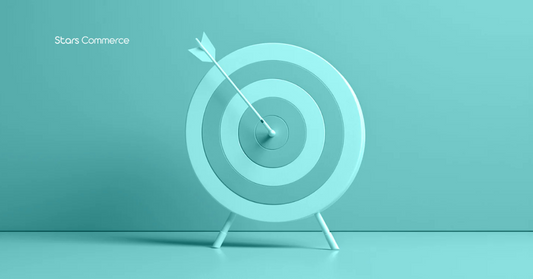Introduction
When most people think about marketing, they think about reach, awareness, and visibility. While these are essential, focusing only on the top of the funnel (TOFU) often leads to a leaky pipeline where potential customers drop off before converting, returning, or referring. The truth is, the most successful brands whether e-commerce or service-based master every stage of the funnel: Awareness, Consideration, Conversion, Retention, and Advocacy.
This blog will dive deep into each stage, explain why it matters, and share actionable tactics businesses can use to maximize impact. By the end, you’ll understand why focusing beyond TOFU and MOFU is the secret to scaling sustainably.
What is a Marketing Funnel?
The marketing funnel represents the customer journey from the first time they encounter your brand to when they become loyal advocates. Each stage has its own objectives, strategies, and tools. Ignoring any stage leads to wasted spend and lost opportunities.
Here are the five stages of the modern funnel:
1. Awareness (Top of Funnel – TOFU)
2. Consideration (Middle of Funnel – MOFU)
3. Conversion (Bottom of Funnel – BOFU)
1. Awareness (Top of Funnel – TOFU)
Goal: Reach & attract new potential customers
Awareness is the first step getting your brand in front of the right audience. But visibility alone doesn’t guarantee sales; it only sets the stage.
Key Tactics:
- Paid social ads (Meta, TikTok, YouTube pre-roll)
- SEO-optimized blog content & guides
- Entertaining/educational social media posts
- PR campaigns, sponsorships, events
- Influencer & creator partnerships
- Display & programmatic advertising
Examples:
E-commerce: TikTok video showing how a skincare product solves acne.
Service-based: LinkedIn article by the founder sharing industry insights.
Why It Matters: Awareness builds the top of your pipeline. Without it, you won’t have prospects to nurture. But awareness without follow-through = wasted ad spend.

2. Consideration (Middle of Funnel – MOFU)
Goal: Educate, nurture, and build trust
At this stage, prospects are aware of you but evaluating if you’re the right fit. This is where you show expertise, credibility, and value.
Key Tactics:
- Retargeting ads (site visitors, social engagers)
- Email nurture sequences with educational content
- Case studies, testimonials, reviews
- Webinars, live demos, or free workshops
- Comparison/competitor pages
- Lead magnets: eBooks, whitepapers, checklists
Examples:
E-commerce: Retarget users who viewed a product with a carousel ad featuring customer reviews.
Service-based: Offer a free consultation or ROI calculator.
Why It Matters: Consideration is where you prove you’re trustworthy. Without strong MOFU, prospects lose interest and move to competitors.

3. Conversion (Bottom of Funnel – BOFU)
Goal: Turn interest into paying customers
This is the critical moment. Many agencies underperform here, but BOFU is where the ROI lives. Effective tactics remove friction and objections while giving customers reasons to act now.
Key Tactics:
- Limited-time offers, urgency triggers, and free shipping
- Abandoned cart recovery (email, SMS, push notifications)
- Product demos, free trials, or strategy calls
- Personalized landing pages with strong CTAs
- Chatbots or live reps handling objections
- Money-back guarantees or free first-month trials
Examples:
E-commerce: Countdown timer on checkout with a discount code.
Service-based: Free 30-minute strategy call or trial campaign.
Why It Matters: You can spend millions on awareness, but if conversions are weak, you’re burning money. Optimizing this stage directly lowers CAC (customer acquisition cost) and boosts revenue.

4. Retention (Post-Purchase / Post-Service)
Goal: Keep customers engaged & buying again
Retention is where many businesses drop the ball. Acquiring a new customer is 5–7x more expensive than keeping an existing one. Brands that master retention scale faster because they maximize customer lifetime value (LTV).
Key Tactics:
- Loyalty & referral programs
- Post-purchase email flows (thank you, how-to guides, product education)
- Cross-sell & upsell campaigns
- Subscriptions & memberships
- Community building (Facebook groups, exclusive clubs)
- Stellar customer service with fast, proactive support
Examples:
E-commerce: Automated reorder reminders for consumables (coffee, skincare).
Service-based: Monthly check-ins with performance reports and bonus recommendations.
Why It Matters: Retention increases LTV and creates predictable cash flow. It also makes scaling ad spend safer since each customer generates more revenue.

5. Advocacy (Turning Customers into Promoters)
Goal: Build a community of brand champions
Advocacy is when your customers promote you willingly because they’ve had a great experience. This stage is the most underutilized, but it can become your most powerful growth engine.
Key Tactics:
- Referral & affiliate programs with strong rewards
- UGC campaigns (encourage reviews, unboxing videos, testimonials)
- Customer spotlights (featuring customers on your site/social)
- VIP or ambassador programs
- Review generation campaigns (Google, Trustpilot, LinkedIn)
Examples:
E-commerce: Customers post TikTok reviews in exchange for rewards.
Service-based: Clients co-host a webinar sharing results achieved with your agency.
Why It Matters: Advocacy turns marketing into a compounding loop. Each customer can bring more customers at a fraction of acquisition cost.

Why Most Agencies Focus Only on TOFU & MOFU
Many agencies stay surface-level: they get you clicks, impressions, and leads. But without BOFU optimization and retention programs, brands struggle with profitability.
Reasons why:
- TOFU/MOFU metrics are easier to report (reach, leads).
- Conversion/retention require deeper integration (CRM, Sales, Checkout, Customer Experience - CX).
- ROI shows slower but compounds over time.
This gap is exactly where forward-thinking agencies and brands can stand out.
Putting It All Together: The Growth Engine
Scaling a business isn’t about more ads; it’s about maximizing the funnel.
Awareness - builds reach.
Consideration - builds trust.
Retention - builds LTV.
Advocacy - builds momentum.
The brands that win long-term are the ones that master all five stages.
Conclusion
The marketing funnel is not just a buzzword - it’s a roadmap for growth. Focusing only on TOFU and MOFU leaves money on the table. By strengthening conversion and retention, businesses unlock profitability, scalability, and long-term customer loyalty.
If you’re ready to build a funnel that doesn’t just attract but also converts and retains, it’s time to rethink your strategy and start optimizing every stage of the journey.


